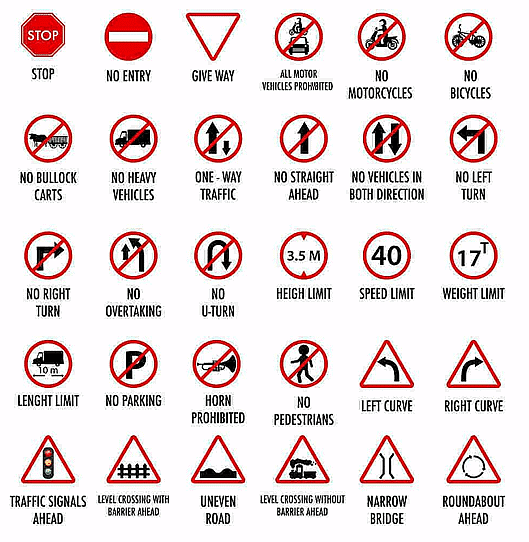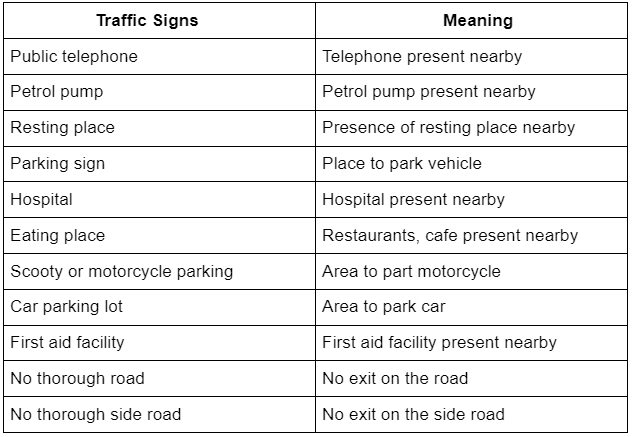Road Traffic Signs | General Knowledge for Young Learners - Class 1 PDF Download
| Table of contents |

|
| Introduction |

|
| Road Symbols |

|
| Important Traffic Signs to Follow in India |

|
| Summary |

|
Introduction
Road signs often known as traffic signs are posted along the side of roadways to inform and direct drivers. Simple wooden or stone milestones were the oldest types of signs. Since the 1930s, as traffic volumes have increased, many nations have adopted pictorial signs or have similarly standardized and simplified their signs to overcome language barriers and improve traffic safety. There are many different types of road signs that are utilized, so it's important that you understand what they indicate and how to use them.
Each traffic sign is used in a specific area of the road, and these signs indicate what one must do and must not do. Following all the traffic rules and signs will result in lesser accidents and will make the roads safe for the general public.
Road Symbols
Traffic lights, also known as traffic signals, are lights that are used to regulate the flow of traffic. They are positioned at crossings and intersections of roads. The multiple light hues instruct drivers on what to do. The colours of traffic lights always change in order which is red to yellow and then green.
When traffic lights change, they typically do so in the following order:
- When the red light is on, the traffic must halt.
- When the green light is on, the driver may now begin or continue driving.
- Drivers are advised to stop when it is safe to do so since the light is going to turn red when the yellow light is on.

Important Traffic Signs to Follow in India
In order to warn vehicles and pedestrians about potential dangers on the road, traffic signs serve as prominent speakers.
Three categories cover the majority of traffic signs in India:
1. Mandatory Traffic Signs


2. Traffic Warning Signs


3. Traffic Signs that Provide Information


Summary
Traffic moves smoothly, and there is no congestion with the help of road signs and signals. It reduces the likelihood of accidents and gives relevant details about the upcoming route. It also prevents traffic violations. These indicators greatly aid drivers in having a pleasant driving experience. To maintain a better system of road traffic, the Roadways and Traffic Department of India updates the traffic signs chart.
|
51 videos|98 docs|37 tests
|
|
51 videos|98 docs|37 tests
|

|
Explore Courses for Class 1 exam
|

|

















